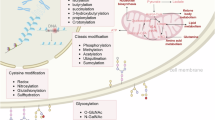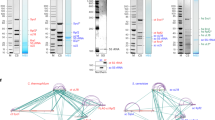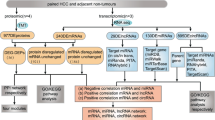Abstract
hMTR4 is an RNA helicase and an essential co-factor for the nuclear RNA exosome. Its role in the p53 pathway and cell cycle control remains unknown. Here, gain- and loss-of-function analyses in cell models showed that hMTR4 could not affect p53 mRNA levels, but decreased the levels of p53 protein and its downstream target genes by promoting p53 ubiquitination and degradation, thus accelerating cell cycle progression. These effects of hMTR4 were abrogated by nutlin-3A, an inhibitor of E3 ligase MDM2. Mechanistically, hMTR4 promoted rRNA processing in an RNA helicase-dependent manner, thus increased the amount of mature rRNA to bind ribosomal protein L5 (RPL5), resulted in sequestration of RPL5 in the nucleolus and reduced binding of RPL5 to MDM2 in the nucleoplasm, consequently promoted MDM2-mediated degradation of p53 protein. Silencing RPL5 blocked the effect of hMTR4 knockdown in upregulating p53, while hMTR4 overexpression abrogated the role of RPL5 in stimulating p53 activity. Interestingly, hMTR4 reduced the mRNA levels of p53-target genes via repressing p53 activity rather than promoting their RNA degradation. These findings disclose a novel hMTR4-rRNA-RPL5-MDM2-p53 axis and highlight hMTR4 and rRNA processing as important regulators of the p53 pathway. Further investigations on clinical samples showed that hMTR4 and RPL5 were frequently upregulated in different malignancies, including hepatocellular carcinoma (HCC), and they exhibited a positive correlation. High hMTR4 level was correlated with high recurrence of HCC, among patients with high RPL5 levels and wildtype p53 in tumors. Studies using mouse xenograft models revealed that silencing Skiv2l2 (the homologue of human hMTR4) in mouse hepatoma cells inhibited xenograft development, and tumor growth was suppressed by intratumoral injection of antisense oligonucleotides (ASO) targeting Skiv2l2. These data suggest the significance of hMTR4 overexpression in promoting tumor growth and its potential as a therapeutic target.
This is a preview of subscription content, access via your institution
Access options
Subscribe to this journal
Receive 12 print issues and online access
$259.00 per year
only $21.58 per issue
Buy this article
- Purchase on SpringerLink
- Instant access to full article PDF
Prices may be subject to local taxes which are calculated during checkout








Similar content being viewed by others
Data availability
This study did not generate any unique datasets or codes. The data generated in this study are available within the article and its Supplementary data files.
References
Lingaraju M, Schuller JM, Falk S, Gerlach P, Bonneau F, Basquin J, et al. To process or to decay: a mechanistic view of the nuclear RNA exosome. Cold Spring Harb Symp Quant Biol. 2019;84:155–63.
Weick EM, Lima CD. RNA helicases are hubs that orchestrate exosome-dependent 3’-5’ decay. Curr Opin Struct Biol. 2021;67:86–94.
Fraga de Andrade I, Mehta C, Bresnick EH. Post-transcriptional control of cellular differentiation by the RNA exosome complex. Nucleic Acids Res. 2020;48:11913–28.
Puno MR, Weick EM, Das M, Lima CD. SnapShot: the RNA exosome. Cell. 2019;179:282.
Zinder JC, Lima CD. Targeting RNA for processing or destruction by the eukaryotic RNA exosome and its cofactors. Gene Dev. 2017;31:88–100.
Lingaraju M, Johnsen D, Schlundt A, Langer LM, Basquin J, Sattler M, et al. The MTR4 helicase recruits nuclear adaptors of the human RNA exosome using distinct arch-interacting motifs. Nat Commun. 2019;10:3393.
Lubas M, Christensen MS, Kristiansen MS, Domanski M, Falkenby LG, Lykke-Andersen S, et al. Interaction profiling identifies the human nuclear exosome targeting complex. Mol Cell. 2011;43:624–37.
Meola N, Domanski M, Karadoulama E, Chen Y, Gentil C, Pultz D, et al. Identification of a nuclear exosome decay pathway for processed transcripts. Mol Cell. 2016;64:520–33.
Schmid M, Jensen TH. The nuclear RNA exosome and its cofactors. Adv Exp Med Biol. 2019;1203:113–32.
Dorner K, Ruggeri C, Zemp I, Kutay U. Ribosome biogenesis factors-from names to functions. EMBO J. 2023;42:e112699.
Lange H, Sement FM, Gagliardi D. MTR4, a putative RNA helicase and exosome co-factor, is required for proper rRNA biogenesis and development in. Plant J. 2011;68:51–63.
Thoms M, Thomson E, Bassler J, Gnädig M, Griesel S, Hurt E. The exosome is recruited to RNA substrates through specific adaptor proteins. Cell. 2015;162:1029–38.
Lohrum MAE, Ludwig RL, Kubbutat MHG, Hanlon M, Vousden KH. Regulation of HDM2 activity by the ribosomal protein L11. Cancer Cell. 2003;3:577–87.
Dai MS, Lu H. Inhibition of MDM2-mediated p53 ubiquitination and degradation by ribosomal protein L5. J Biol Chem. 2004;279:44475–82.
Fumagalli S, Di Cara A, Neb-Gulati A, Natt F, Schwemberger S, Hall J, et al. Absence of nucleolar disruption after impairment of 40S ribosome biogenesis reveals an rpL11-translation-dependent mechanism of p53 induction. Nat Cell Biol. 2009;11:501–8.
Pelletier J, Thomas G, Volarevic S. Ribosome biogenesis in cancer: new players and therapeutic avenues. Nat Rev Cancer. 2018;18:51–63.
Fan J, Kuai B, Wang K, Wang LT, Wang YM, Wu XD, et al. mRNAs are sorted for export or degradation before passing through nuclear speckles. Nucleic Acids Res. 2018;46:8404–16.
Hrossova D, Sikorsky T, Potesil D, Bartosovic M, Pasulka J, Zdrahal Z, et al. RBM7 subunit of the NEXT complex binds U-rich sequences and targets 3’-end extended forms of snRNAs. Nucleic Acids Res. 2015;43:4236–48.
Zhou X, Hao Q, Zhang Q, Liao JM, Ke JW, Liao P, et al. Ribosomal proteins L11 and L5 activate TAp73 by overcoming MDM2 inhibition. Cell Death Differ. 2015;22:755–66.
He X, Zhao J, Adilijiang A, Hong P, Chen P, Lin X, et al. Dhx33 promotes B-cell growth and proliferation by controlling activation-induced rRNA upregulation. Cell Mol Immunol. 2023;20:277–91.
Cui KS, Gong L, Zhang H, Chen Y, Liu BX, Gong ZC, et al. EXOSC8 promotes colorectal cancer tumorigenesis via regulating ribosome biogenesis-related processes. Oncogene. 2022;41:5397–410.
Sasaki M, Kawahara K, Nishio M, Mimori K, Kogo R, Hamada K, et al. Regulation of the MDM2-P53 pathway and tumor growth by PICT1 via nucleolar RPL11. Nat Med. 2011;17:944–51.
Li Y, Zhou Y, Li B, Chen F, Shen W, Lu Y, et al. WDR74 modulates melanoma tumorigenesis and metastasis through the RPL5-MDM2-p53 pathway. Oncogene. 2020;39:2741–55.
Cao PB, Yang AQ, Li PY, Xia X, Han YQ, Zhou GM, et al. Genomic gain of promotes hepatocellular carcinoma through reducing the RPL11-MDM2-p53 signaling. Sci Adv. 2021;7:eabf4304.
Cheng Y, Wang S, Zhang H, Lee JS, Ni C, Guo J, et al. A non-canonical role for a small nucleolar RNA in ribosome biogenesis and senescence. Cell. 2024;187:4770–89.
Orsolic I, Bursac S, Jurada D, Hofman ID, Dembic Z, Bartek J, et al. Cancer-associated mutations in the ribosomal protein L5 gene dysregulate the HDM2/p53-mediated ribosome biogenesis checkpoint. Oncogene. 2020;39:3443–57.
Hofman IJF, van Duin M, De Bruyne E, Fancello L, Mulligan G, Geerdens E, et al. RPL5 on 1p22.1 is recurrently deleted in multiple myeloma and its expression is linked to bortezomib response. Leukemia. 2017;31:1706–14.
Meng X, Tackmann NR, Liu SJ, Yang J, Dong JH, Wu CY, et al. RPL23 links oncogenic RAS signaling to p53-mediated tumor suppression. Cancer Res. 2016;76:5030–9.
Morcelle C, Menoyo S, Morón-Duran FD, Tauler A, Kozma SC, Thomas G, et al. Oncogenic MYC induces the impaired ribosome biogenesis checkpoint and stabilizes p53 independent of increased ribosome content. Cancer Res. 2019;79:4348–59.
Yu LL, Kim J, Jiang L, Feng BB, Ying Y, Ji KY, et al. MTR4 drives liver tumorigenesis by promoting cancer metabolic switch through alternative splicing. Nat Commun. 2020;11:708.
Xie C, Zhang LZ, Chen ZL, Zhong WJ, Fang JH, Zhu Y, et al. A hMTR4-PDIA3P1-miR-125/124-TRAF6 regulatory axis and its function in NF kappa B signaling and chemoresistance. Hepatology. 2020;71:1660–77.
Li Y, Wang M, Yang MW, Xiao YY, Jian YT, Shi DN, et al. Nicotine-induced ILF2 facilitates nuclear mRNA export of pluripotency factors to promote stemness and chemoresistance in human esophageal cancer. Cancer Res. 2021;81:3525–38.
Fang JH, Zhou HC, Zhang C, Shang LR, Zhang L, Xu J, et al. A novel vascular pattern promotes metastasis of hepatocellular carcinoma in an epithelial-mesenchymal transition-independent manner. Hepatology. 2015;62:452–65.
Mahat DB, Kwak H, Booth GT, Jonkers IH, Danko CG, Patel RK, et al. Base-pair-resolution genome-wide mapping of active RNA polymerases using precision nuclear run-on (PRO-seq). Nat Protoc. 2016;11:1455–76.
Bankhead P, Loughrey MB, Fernandez JA, Dombrowski Y, McArt DG, Dunne PD, et al. QuPath: open source software for digital pathology image analysis. Sci Rep. 2017;7:16878.
Gao JJ, Aksoy BA, Dogrusoz U, Dresdner G, Gross B, Sumer SO, et al. Integrative analysis of complex cancer genomics and clinical profiles using the cBioPortal. Sci Signal. 2013;6:pl1.
Chen L, Zhang C, Xue R, Liu M, Bai J, Bao J, et al. Deep whole-genome analysis of 494 hepatocellular carcinomas. Nature. 2024;627:586–93.
Subramanian A, Tamayo P, Mootha VK, Mukherjee S, Ebert BL, Gillette MA, et al. Gene set enrichment analysis: a knowledge-based approach for interpreting genome-wide expression profiles. Proc Natl Acad Sci USA. 2005;102:15545–50.
Acknowledgements
This work was supported by grants from the National Key R&D Program of China (2022YFA1303302 to SMZ); National Natural Science Foundation of China (82230093 and 81930076 to SMZ, 32000494 and 32370773 to CX); Guangdong Basic and Applied Basic Research Foundation (2023A1515012478 to SMZ, 2023A1515012301 to CX); Guangzhou Basic Research project (2023A04J1753 to CX). We thank Prof. Hong Cheng at Center for Excellence in Molecular Cell Science, Chinese Academy of Sciences for providing hMTR4-expressing plasmids and technical assistance, Prof. Yun-Fei Yuan at Sun Yat-sen University Cancer Center for providing human HCC tissues and clinical information, Dr. Yi-Fang Lin and Mr. Yu-Chen Ji for technical assistance.
Author information
Authors and Affiliations
Contributions
Conception and design: CX and SMZ; Development of methodology: CX, XLL, and BC; Acquisition of data: CX, XLL, BC, SC, FXX, QCW, ZLC, and FJH; Funding acquisition: CX and SMZ; Data analysis and interpretation: CX, XLL, BC, SC, FXX, QCW, ZLC, FJH, YP, and SMZ; Figure preparation: CX and XLL; Writing the manuscript: CX, XLL, and SMZ; Study supervision: SMZ.
Corresponding authors
Ethics declarations
Competing interests
The authors declare no competing interests.
Ethics approval and consent to participate
All experiments using human samples were approved by the Institutional Research Ethics Committee at Sun Yat-sen University (Approval number: GZR2020-048) and complied with all relevant ethical guidelines. Informed consent was obtained from each patient. All mouse experiments were approved by the Institutional Animal Care and Use Committee at Sun Yat-sen University (Approval number: SYSU-IACUC-2020-B0621) and complied with all relevant ethical guidelines.
Additional information
Publisher’s note Springer Nature remains neutral with regard to jurisdictional claims in published maps and institutional affiliations.
Supplementary information
Rights and permissions
Springer Nature or its licensor (e.g. a society or other partner) holds exclusive rights to this article under a publishing agreement with the author(s) or other rightsholder(s); author self-archiving of the accepted manuscript version of this article is solely governed by the terms of such publishing agreement and applicable law.
About this article
Cite this article
Xie, C., Liang, XL., Chen, B. et al. hMTR4 promotes p53 protein degradation and tumor growth by accelerating rRNA processing and regulating the RPL5-MDM2 axis. Cell Death Differ (2025). https://doi.org/10.1038/s41418-025-01541-4
Received:
Revised:
Accepted:
Published:
DOI: https://doi.org/10.1038/s41418-025-01541-4



